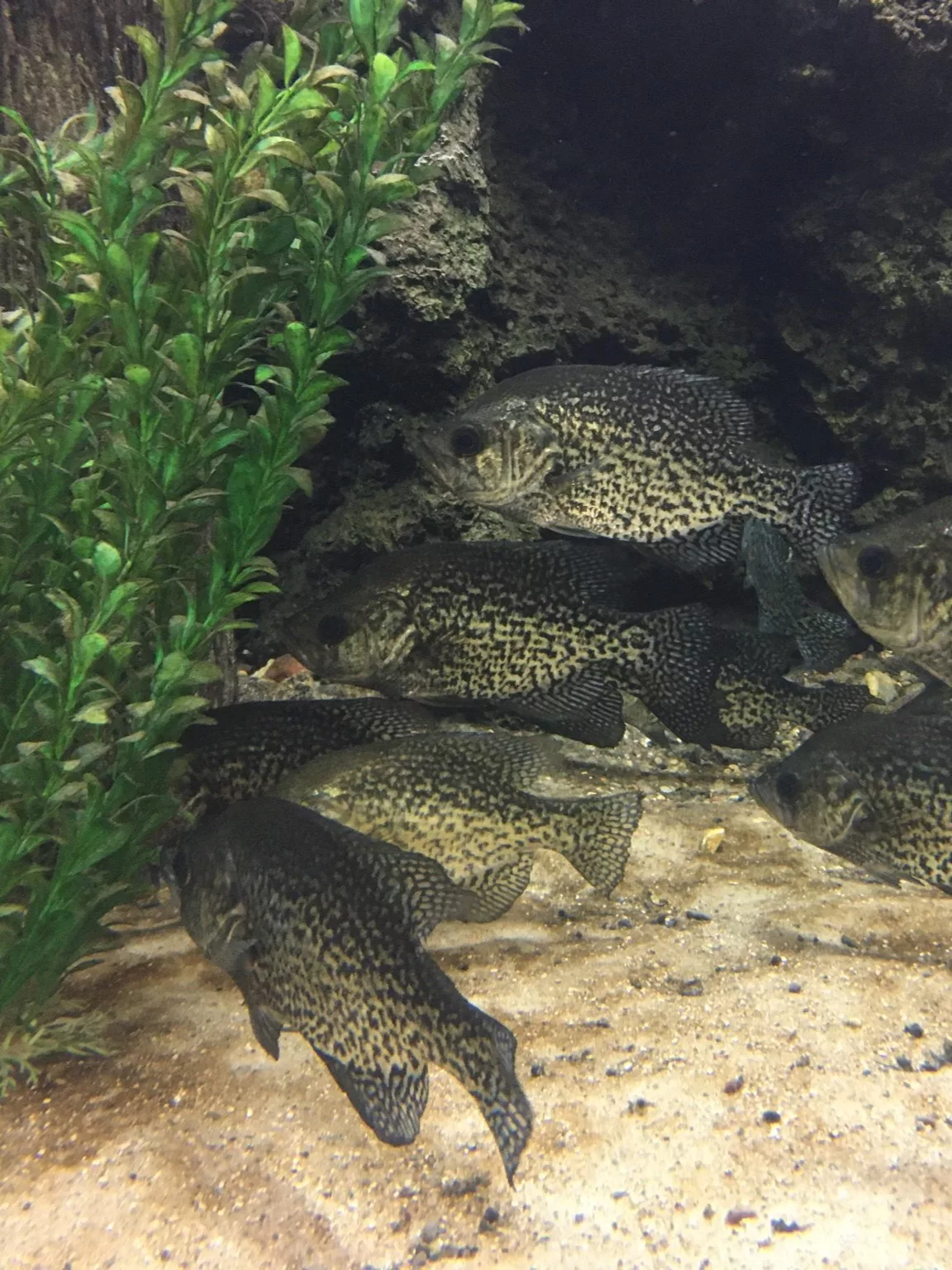
Summer weedlines are great places to start to find crappies. Use jigs and small crankbaits cast and worked through different areas of the column along the stand depending on light conditions to find where fish are feeding. Simonson Photo.
By Nick Simonson
Summer’s dense weedlines provide a veritable smorgasbord for crappies preying on minnows and other baitfish species. Best of all, as these verdant walls become denser while the dog days settle in, they become a barrier against which slabs can pin their prey and carry out a feeding frenzy in the warm waters of August. Connecting with those feeding schools of specks this time of year can produce some incredibly fast angling and a few simple lures and tactics can make a green-and-black blur of an evening on just about any water containing crappies.
Against the Wall
Think of summer’s well-established weedlines as the boards on a winter ice rink, and the small minnows and insects moving in and out of them as a loose puck. Crappies will be schooling close to these areas frequently to find their food sources and are the proverbial hockey players on the chase to be the first on the scene. Notably, at dawn and dusk, crappies will be up higher in the adjacent water column and during midday may be found deeper, but still relating to well-established weedlines and utilizing this edge as a way of staying close to and corralling their food. Finding inside turns or small pockets on these established edges are worth a mark on the GPS, as the natural cup shape of such a feature provides a perfect place for specks to swarm and pin up their prey. When winds are blowing into these holding areas and helping do the work of driving baitfish into a feeding zone is a perfect time to target such prime spots.
Advance an Offering
Exploring weedlines is as simple as casting out and working an offering back to the boat, and checking a sonar screen to see what’s below will help with that task. Utilize a transducer to find summer weeds and then slowly cruise out to the edge of the stand of vegetation. Cast flashy lures such as a Roadrunner jig, Beetle Spin, or small crankbait like the Rapala Countdown in size 03 or 05, to cover the edge effectively and connect with fish, counting the lures down and retrieving them to determine the depth at which crappies happen to be holding or foraging. Once located, more precision offerings can be made, utilizing small jigs with a two-inch crappie tube or other tiny soft plastic. Small minnows suspended under a float provide an effective livebait option as well, and a little breeze helps add some action to any such presentation. Just be certain to monitor the rig’s position so that it doesn’t drift in and get tangled in the dense vegetation.
Angle them Anywhere
From one side of a lake to another, or from crappie water to crappie water, the tactics of isolating productive weedlines can be easily transferred. Any way the wind blows, it’s key to have a few good spots staked out as conditions change. With the extended warm weather that August often brings, this pattern can stay put for weeks at a time and fishing will most certainly be good as long as things remain stable. Through the changing light conditions as well, be ready to move up in the column with casted offerings and raise the hook-and-minnow combination under a slipfloat to find the most effective areas as day turns to night. A few successful outings will help provide insight into how things work on a particular water and will repeat year-after-year for continued success in the future, as long as the weeds keep growing, which is pretty much a guarantee.
Find those well-developed weedlines and the best spots sporting unique turns or pockets that help crappies corral baitfish, then utilize search-and-connect methods and more stationary options to catch them. From there, form a pattern that can be used elsewhere on a water or on any other crappie lake this time of year for the best success and make targeting the edges of summer’s densest habitat a major part of your search for slabs.
